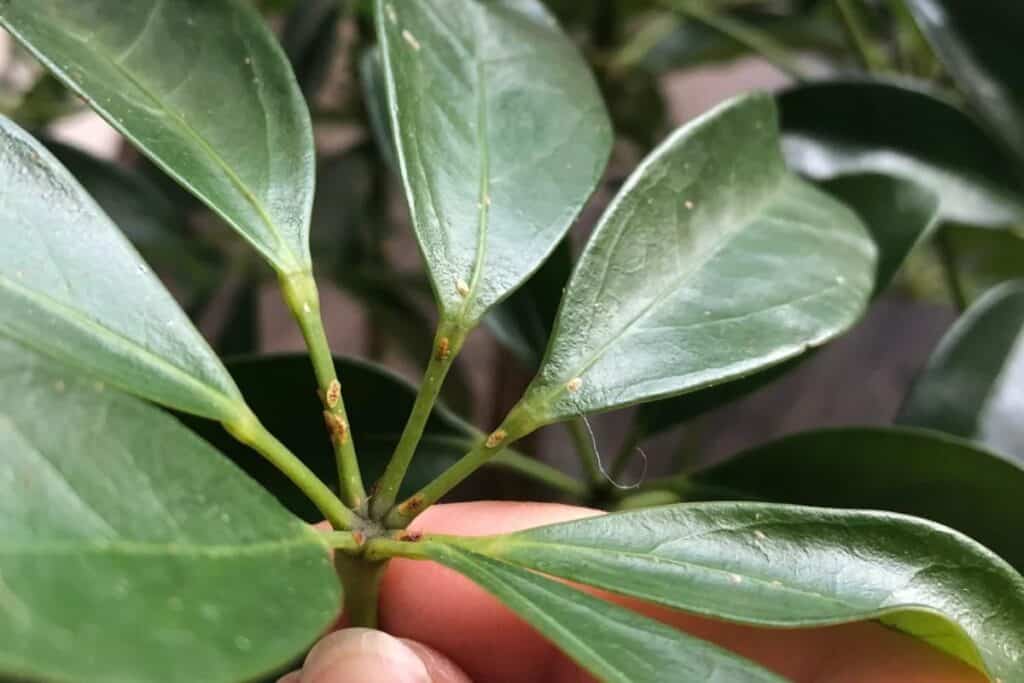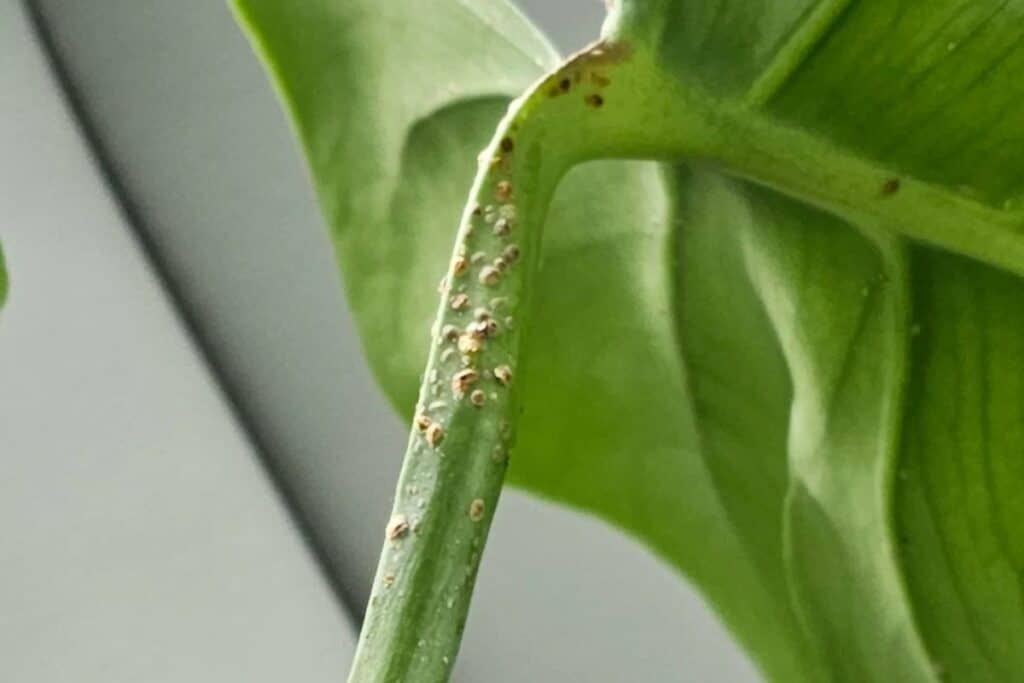Scale insects are stealthy pests that latch onto stems and leaves, draining your plant’s vitality. Learn how to identify, treat, and prevent scale infestations.
🐞 What Are Scale Insects and Why They’re a Problem
Scale insects are tiny, dome-shaped pests that attach themselves to stems and leaves, feeding on plant sap. They look like brown or tan bumps and are often mistaken for part of the plant. Over time, they cause yellowing, leaf drop, and sticky honeydew that attracts mold and ants.

🔍 How to Spot Scale Insects Early
Scale insects are masters of disguise. Here’s how to catch them before they cause serious damage:
- Raised bumps on stems or leaf veins
- Sticky residue or black sooty mold
- Yellowing or dropping leaves
- Ants crawling on the plant (a sign of honeydew)
🧴 Scale Treatment Options That Work
1. Manual Removal with Cotton Swab + Alcohol
- Dab full-strength 70% isopropyl alcohol directly on scale
- Gently scrape off with a soft brush or cloth
- Rinse plant after 15–30 minutes to avoid leaf damage
2. Neem Oil or Horticultural Oil (0.5–1% dilution)
- Smothers scale and disrupts their life cycle
- Offers residual protection
- Apply in the evening and wipe excess after a few hours
- Safe for sensitive foliage when diluted properly
🧠 Pro Tip:
Scale insects often hide along leaf veins and stem joints. Use a fine mist and tilt your plant to reach these spots.
3. Insecticidal Soap (for soft scale)
- Effective against immature scale stages
- Use weekly until infestation is gone
- Avoid direct sun after application

🧼 Bonus Tactics for Persistent Infestations
- Repeat treatments every 5–7 days
- Isolate infected plants to prevent spread
- Wipe down pots, saucers, and nearby surfaces
- Prune heavily infested areas if needed
🚫 How to Prevent Scale Insects Long-Term
- Inspect new plants before bringing them indoors
- Quarantine for 1–2 weeks
- Avoid overfertilizing—lush growth attracts pests
- Improve airflow and reduce humidity
- Regularly clean stems and leaf joints with a damp cloth
🌱 Final Thoughts
Scale insects may be slow-moving, but they’re stubborn. With consistent inspection, targeted treatments, and smart prevention, you can keep your indoor jungle thriving.
